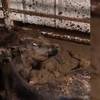On November 6, the United States Coast Guard held a public meeting in Washington, D.C. to review proposals regarding the installation of devices to monitor cargo levels aboard tank vessels. The issue is the last fragment of unfinished regulatory business compelled by the passage of the Oil Pollution Act of 1990 ("OPA 90").
When OPA 90 was enacted, the U.S. Congress was concerned not only with cargo losses such as had occurred in the Exxon Valdez incident, but also
with small, barely detectable leaks that might either cause environmental damage as a vessel moved through sensitive areas or, worse
yet, might presage an incipient structural failure. With an abundance of goodwill and a scarcity of technical knowledge, the Congress enacted Section 4110 of OPA and directed the Coast Guard to sort out the details on technical standards and use requirements for devices that would monitor tank pressures and/or cargo levels. These measures were supposed to have been put into effect by 1991.
In 1995 the Coast Guard proposed a performance standard for leak detection devices of the lesser of 0.5 per cent of the loaded cargo quantity or 1,000 gallons. In a Temporary Rule published in 1997, the U.S. Coast Guard requested manufacturers to submit devices that could meet the sensitivity criteria previously established. No proposals were received and the rule expired by its own terms in 1999.
The matter might have ended there had not environmental activists brought legal action against the Coast Guard for failure to promulgate
rules fulfilling the mandate of OPA 90. In December, 2000, a federal court of appeals ordered the U.S. Coast Guard promptly to establish regulations governing the devices (referred to as "TLPMs").
Consequently, the U.S. Coast Guard issued on 1 October 2001 a Notice of Proposed Rulemaking (NPRM). The objective of this NPRM is to monitor cargo level of the pressure in the cargo tanks of oil tankers and thus monitor continuously whether there is any oil leakage through pits or cracks on the single hull tankers' structure. The NPRM also called for a public hearing on 6 November and written comments by November 30.
The dilemma facing the Coast Guard and the industry thus becomes one of reconciling a clear mandate of the U.S. Congress with a stubborn and inconvenient technical impossibility of minutely and accurately measuring small losses of liquid cargoes moving aboard vessels operating in a liquid medium that historically refuses to hold still even for distinguished jurists and legislative bodies.
At the public meeting on 6 November, several domestic and international maritime organizations, including INTERTANKO, endeavoured to make clear the technical difficulties of detecting small leaks from large tanks in a dynamic environment. This view was supported by an equipment manufacturer in attendance. Other comments observed that the universe of ships affected (single hull tank vessels) is declining because of the combined effects of OPA 90 and MARPOL phase-out requirements. The costs of even imperfect systems appear to be considerable. The amounts of oil prevented from being spilled are minute. Although the Coast Guard tentatively estimates the per-vessel cost of TLPMs as $6,000, INTERTANKO believes the per vessel costs of installation of any system sophisticated enough to detect low-level cargo losses while under way will exceed $500,000. At the public meeting, INTERTANKO's representative, Sean Connaughton of Troutman Sanders urged the Coast Guard to speak frankly to Congress about the inability of existing technology to meet legislative objectives expressed in OPA section 4110.
Featured videos

Tracking Foreign Vessels Working in the U.S. Jones Act Market

Inside the Electrified Truckable Tug

Inmarsat Enhances Service to Drive Digitalization
Subscribe for
Maritime Reporter E-News
Maritime Reporter E-News is the maritime industry's largest circulation and most authoritative ENews Service, delivered to your Email five times per week









